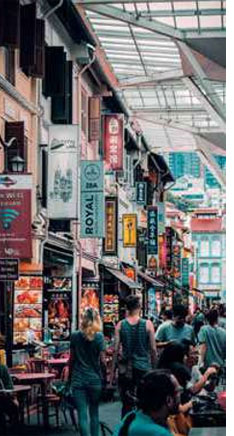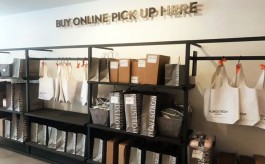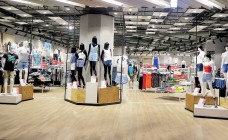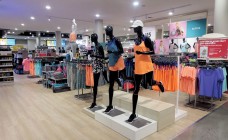3 Major trends in shopper behaviour
By Jane Perry | February 28, 2018
The article focusses on the three major inclinations in shopper behaviour that are chiefly affecting the entire retail and shopping environment across all channels.
 As a business, Geometry believes in understanding human behaviour, which is fundamental to driving shopper activation in-store and online. In this piece, we look at factors that are affecting shoppers and their shopping behaviours, and the implications for retailers, brands and marketers.
As a business, Geometry believes in understanding human behaviour, which is fundamental to driving shopper activation in-store and online. In this piece, we look at factors that are affecting shoppers and their shopping behaviours, and the implications for retailers, brands and marketers.
We’ve identified three major trends driving the change in shopper behaviour; that isn’t to say that there aren’t other behaviours that are evolving on a more micro basis; but these are ones that we can see transcending multiple categories, channels and brands and therefore, will affect all areas of the shopping ecosystem.
1.BUSY, COMPLEX LIVES, MEAN THAT SHOPPERS ARE DEMANDING TOTAL CONVENIENCE
Shoppers are looking for “immediate convenience”. Driven by factors like increased and fragmented media sources and the rise in technology, there’s a proliferation in the number  of choices we need to make on a daily basis, whilst well informed, our choices are made quickly
of choices we need to make on a daily basis, whilst well informed, our choices are made quickly
We are living in the moment more and more so there is increasingly more immediate shopper missions for example if ‘something for tonight’. We will abandon shopping missions when they are not convenient i.e. delivery options don’t match our expectations online or there is too much in-store complexity navigating a category or a fixture
Shoppers are seeing the value of digital during their shopping missions whether that be for research, comparison or conversion. We are almost at the saturation point where 100% of purchases will involve digital in some way or another
We are hitting 10+ years of algorithms now from the likes of Amazon, which are getting increasingly sophisticated at learning and predicting our behaviour and offering choices that they think we will like
These algorithms are locking consumers in to certain brands, and reducing the browsing needed in low interest categories. Great if you are the preferred brand, a challenge if not
The ability to begin merging multiple data streams into genuinely helpful shopper solution is beginning. Overlaying social sentiment, purchase history, and other data sources such as weather etc. will allow brands to move further upstream and target shoppers at an earlier stage in the purchase journey. The challenge for brands is to get ‘on the list’ combined with easier fulfilment solutions
2. EXPERIENCES MAKE US HAPPIER THAN POSSESSIONS
Shoppers today feel that paying for ‘things’ with time and attention is an almost intolerable cost. We know shoppers are willing to pay more for a better, more exclusive experience. Retail is uniquely placed to offer customers the level of emotional and sensory engagement they are looking for
The power of storytelling brings commoditised products to life in unprecedented ways. The injection of sensorial experiences into dying categories shifts the conversation from functions to feelings
Mobile is being used more and more to elevate the in-store experience and give products a richer context
Experiences are not just the exclusive playground of retailers, brands without their own physical presence also have the power to create engaging experiences at product level or by jumping onto the never ending pop-up trend for example
In a marketplace with endless choices to make, customers flip from purchasing the cheapest/fastest/ easiest option in one category, to fussing over every little detail in another
It’s important for brands not to be inhibited by category norms, or be restricted by their category. We have the opportunity to see the shopper journey as a canvas to tell a story, and create meaningful experiences
3. THE QUEST TO MAKE INFORMED CHOICES
Shoppers’ idea of ‘value’ has changed drastically from products in return for money to services in return for their data. Shoppers are more likely to purchase from a retailer that knows them by name, remembers their purchases or makes recommendations based on previous and/or current shopping baskets
In the quest to make informed choices, we know that shoppers are willing to give more of their personal data as long as there is something valuable in it for them. In exchange for data, shoppers expect personalisation, something curated uniquely for them, exclusive offers and/or experiences. Shoppers expect their loyalty to be rewarded
It’s all about making better recommendations by learning about shoppers’ preferences. Acknowledging people’s uniqueness to design individual solutions and suggest products that can better fit their lifestyles. We can also drive more persolnalised communications by tapping into mobile analytics. The reward is tangible for those that are setting the pace. Harvard Business Review cites that organisations investing above the industry average in customer data and analytics outpace competitors two to three times on margins, sales and profits
Even without the use of advanced technology, you can learn more about your shoppers, and cater to their different needs
The future of shopping is about helping shoppers on their terms, providing compelling shopping experiences and personalised products and services through individualist understanding.
Related Viewpoints
Chanda P Kumar
Chanda P Kumar, Associate Director- Marketing & Communications, Strategy , FRDC
Adding the right sparkle in jewellery store design









Comments